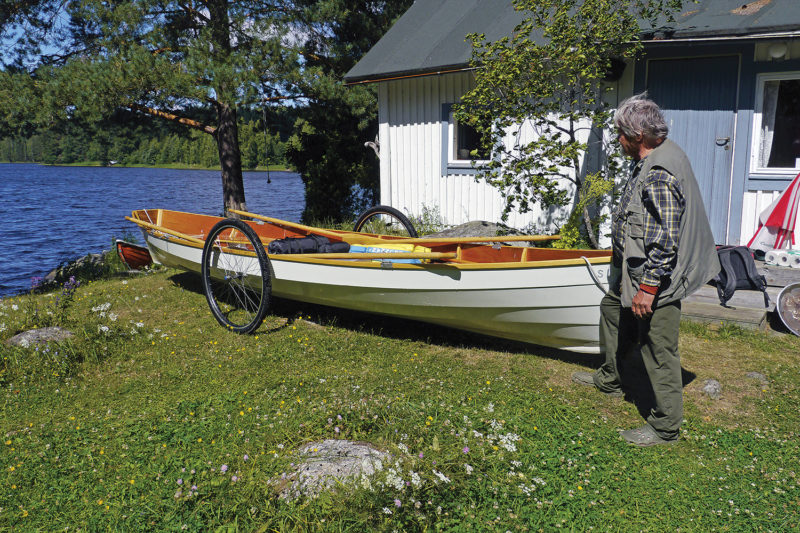 Anthony Shaw
Anthony ShawFor long-distance rowing trips on Finland’s many lakes, Jouko Koskinen had in mind a lightweight boat that would row very well but could also be fitted with bicycle wheels for portages and equipped for camp-cruising.
In their land of many thousand lakes, Finns and watercraft have developed hand-in-hand since the beginning of modern times. In the heart of the lake district 120 miles northeast of Helsinki is the country’s largest single collection of rock paintings from prehistory, about half of which seem to feature boats. Puuneveniste’s Sinne 610 Expedition is the latest of light multi-chined craft developed for this same rowing heartland, which also witnesses an annual gathering— the 36-mile marathon in the lakes around the town of Sulkava—in which many thousands of rowers compete in wooden boats.
 Anthony Shaw
Anthony ShawWith a fitted tent and even a table in the cockpit, the boat has comforts of home.
Jouko Koskinen has lived most of his working life in Finland’s metropolitan capital, Helsinki, but he has spent time every summer back in his wife’s childhood lakeside haunts just 25 miles away from those rock paintings. Ever since he took a white-water holiday in Lapland in his teens, Koskinen had dreamed of building a craft that could combine overnight camping with his requirements for efficient travel by water under oars. A hectic professional life forced him to postpone his plans until he met an innovative wooden boat builder, Ruud Van Veelen, at the annual Helsinki Boat Show in 2011. The result of their collaboration is a lightweight dory 6 meters long [about 19‘9“] whose dimensions and fittings accommodate a standard three-arch, double-skin, two-person tent (see related article, page 10). The boat is capable of beaching fully laden with all the gear required for a lengthy expedition.
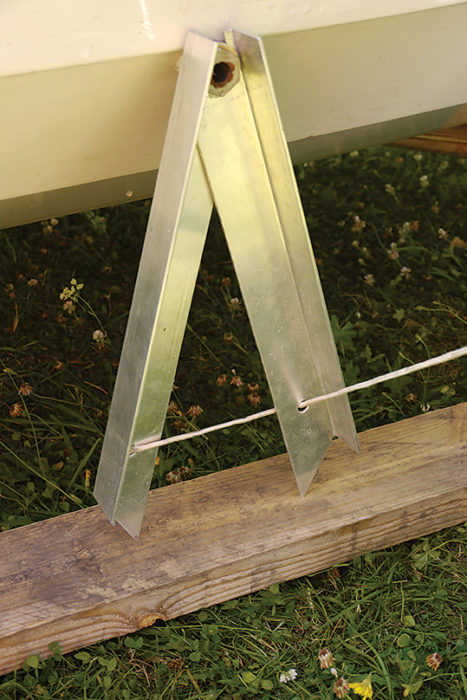 Anthony Shaw
Anthony ShawA simple bracket matching the same fitting used for wheels turns the boat into a stable camping platform. A simple bracket matching the same fitting used for wheels turns the boat into a stable camping platform.
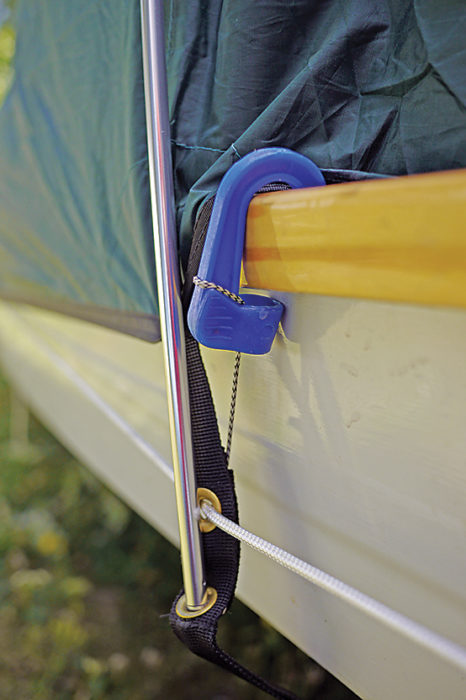 Anthony Shaw
Anthony ShawStraps on the outside of the hull receive tent poles.
The experience of portaging a local logging dory on that Lapland journey prompted Koskinen to find a solution to the challenge of landing a laden craft and portaging it potentially singlehandedly around any shore with a reasonably gentle slope. The result is a design incorporating two specially sourced 36“ wheels, built onto dry bearing hubs and fitted with spring-release axles that can be attached to either side of the boat while it is still afloat. The first-generation wheels buckled under the heavy load, but he replaced them with wheels that have rims 11⁄4“ wide and support a heavy-duty tire, all procured from Unicycle in the United Kingdom. The portage solution also eliminated the frequent challenge of locating a suitable flat, rock-free surface for pitching a tent on land. The terrain in eastern Finland consists largely of granite bedrock, but with a couple of strategically located supporting blocks under the hull, the Sinne makes a level sleeping platform, and the tent can be secured by passing straps under the hull.
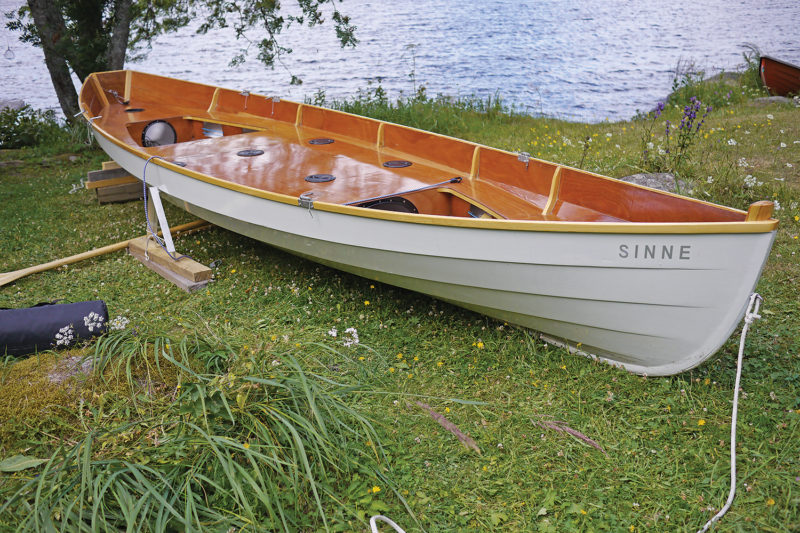 Anthony Shaw
Anthony ShawThe owner favors camp-cruising, but found that level ground was often hard to find. His solution was blocking, at the ends and supported by side braces, to make the boat a level sleeping platform.
From the beginning, the Sinne 610 was intended to be very different from the dedicated lightweight pulling boats that Van Veelen has been building in Sulkava for the past seven years. This model shuns his usual principles of minimal weight and maximum racing speed for the benefits favorable for a touring craft: ample storage space, flexibility in handling and usage, and adaptability to varied requirements. Van Veelen set out to fulfill the specifications of his particularly demanding customer, who had just these requirements in mind, as well as a scale model in hand. The name of the design reflects its use: the Finnish word “sinne” is difficult to translate to English, but perhaps “thither” is a good approximation.
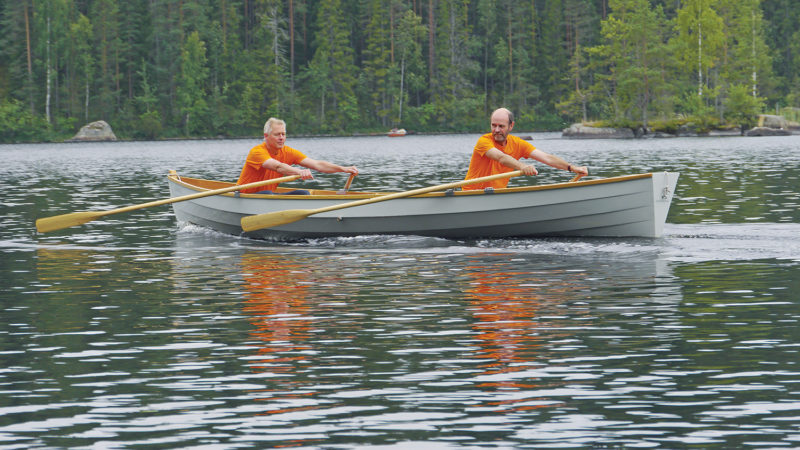 Anthony Shaw
Anthony ShawDesigner Ruud Van Veelen, at the forward oars, has specialized in lightweight racing rowboats, but the Sinne 610 client had specific, non-racing objectives in mind. Solo rowing from the after thwart requires weight forward, typically provided by the camping outfit.
Sinne’s construction, however, is based on the same principles as Van Veelen’s other craft, using 6mm, five-ply marine okoume in plywood-epoxy construction, which eliminates any need for longitudinal stringers at the four chines. The finish consists of multiple layers of two-part varnish. The main differences between the expedition boat and the racing boats are the presence of pine framing and the reinforced decking, which the Sinne needs to offer watertight stowage and accommodate copious gear. The modest transom is also reinforced to take a small outboard, while the rest of the craft resembles quite closely above and below the water the single and double skiffs of about the same length that Van Veelen has been building for marathon rowers. (He also builds 40‘, 14-oared wooden “churchboats” along the same principles and for the same course, but that is another story.)
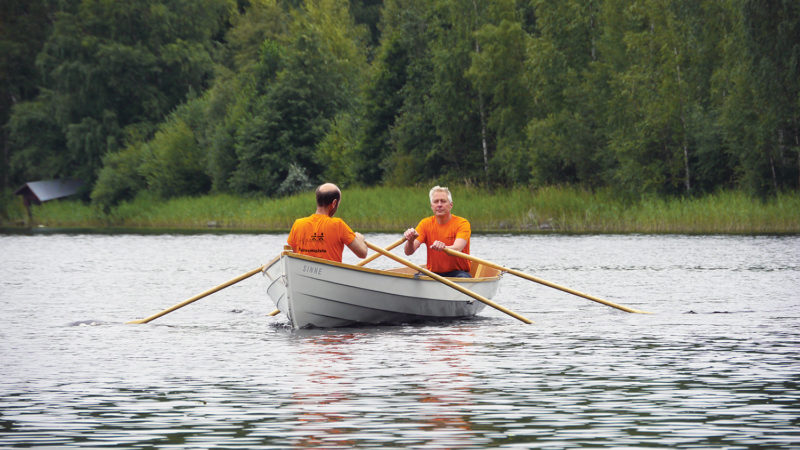 Anthony Shaw
Anthony ShawFinnish rowing often has two rowers facing each other, with the forward rower pulling, the after rower
pushing.
Koskinen has used his new boat for the past two summers, traveling from his idyllic lakeside summer base. He has also transported the craft by car, initially on the roof but now on an aluminum trailer. In addition to using sturdier wheel rims, he has introduced some minor adaptations of his own. For a camper generally more accustomed to well-spread urban dining tables than billy-cans on his knees, Koskinen designed an ample dining table for two to fit between the gunwales at the aft end of the cockpit. Positioned inside the tent, the sitting area gives the crew a thoroughly protected place to enjoy the camp cuisine. The dining table stows on the central deck between the thwarts, along with the wheels and any other bulky gear. In addition to watertight compartments amidships and a small one aft, the cockpit has modest side lockers forward and aft.
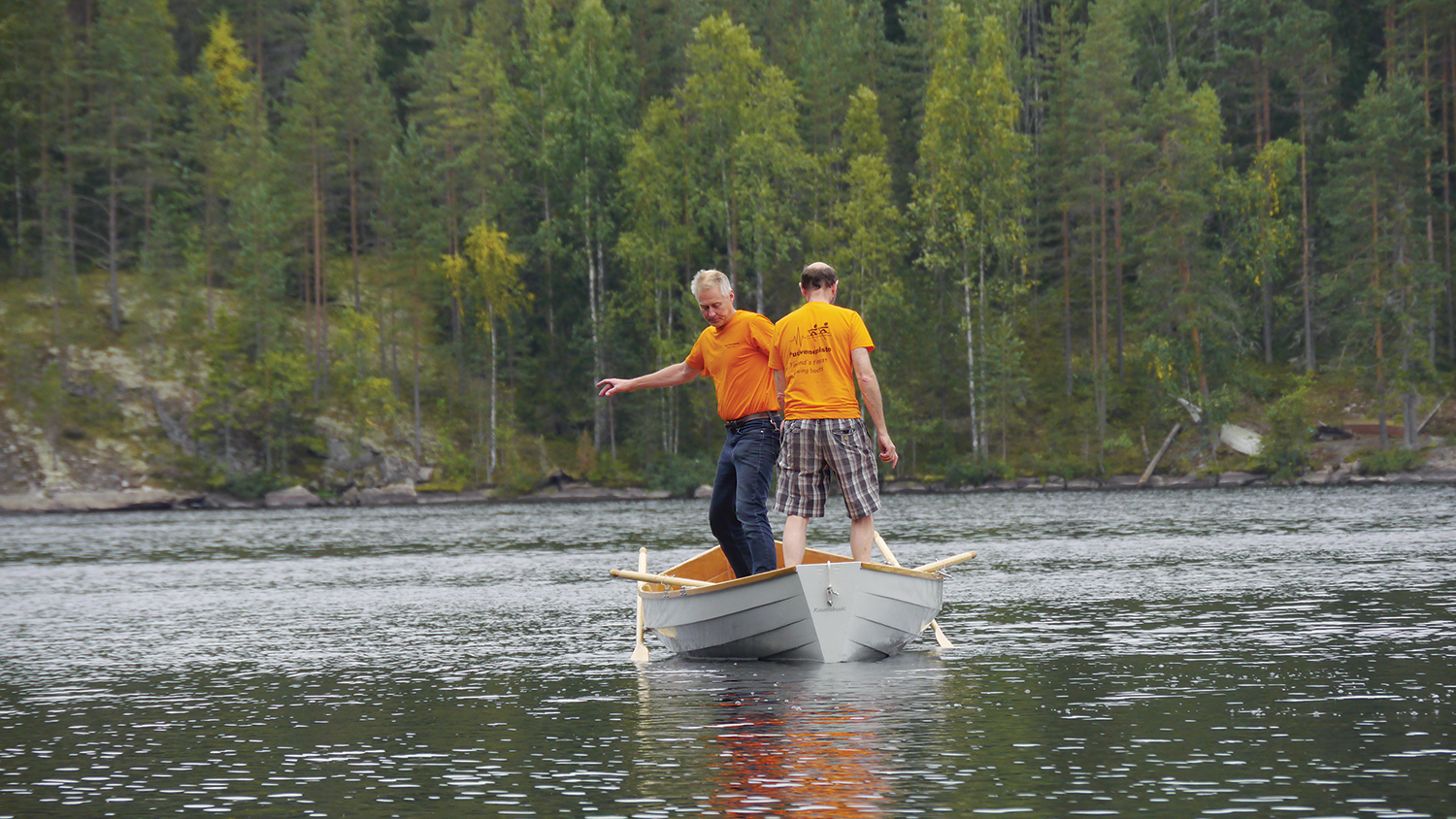 Anthony Shaw
Anthony ShawDespite its shallow draft, the boat has proven reasonably stable.
Rowing Characteristics
With such a lightweight boat, trim is highly subject to the weight distribution of the crew and the equipment. A single rower positioned at the aft thwart requires counterbalancing forward. Still, the boat is responsive and easily maneuverable under oars. Koskinen has made three lengthy journeys under both power and oars. Surprisingly, he advocates the pleasure of rowing by facing forward and pushing on the oars, not only as a variation for posture but also for the unmitigated pleasure of viewing one’s intended course. For a two-person crew, this is also an option for the aft oarsman, who can row facing forward while his counterpart at the forward thwart faces aft and pulls the oars in the usual manner. This resembles the setup used on Finland’s most traditional two-man rowboat, the “shift-rower,” in which the stern oarsman actually uses a long paddle and alternates places with the bow man at the oars at regular intervals. In the more typical, paired setup, the Sinne 610 can easily reach 4 knots [8 km per hour], making a day’s target of 50 to 60 kilometers [about 30 to 40 miles] quite achievable. The 7‘ separation between the two rowers also makes clashing blades unlikely, and two inexperienced rowers can more easily coordinate their efforts, rendering the Sinne a suitable choice for novice rowers as well.
The downside of a lightweight craft is its performance in heavy weather. The Sinne 610 is designed for inland waterways, with an amidships freeboard of only about 35cm [nearly 14“]. There is minimal sheer, making the bow rather exposed, and in the event of shipping water there is no pumping system, so a bailer needs to be part of the gear. That said, the very nature of a lightweight boat is minimal draft. Unladen but for a crew weighing a total of 160 kg [353 lbs], the boat’s draft was less than 3“, and fully laden with an additional 150 kg of gear [330 lbs], it is still well under 4“.
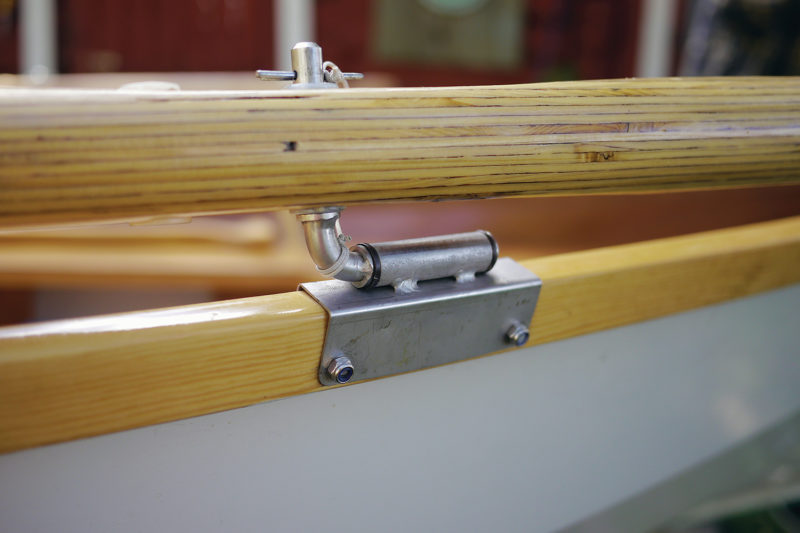 Anthony Shaw
Anthony ShawVan Veelen developed unique oarlocks for Finnish racing requirements, which in the tradition of tholepins state that oarlocks must be at the gunwales and the oars cannot be feathered. For the touring boat, these oarlocks permit the rower to let go of an oar without fear of losing it overboard.
An intriguing feature of all of Van Veelen’s boats is the Sarana oarlock, which he developed to improve blade control while still maintaining the non-feathering characteristic typical of all Finnish rowing boats. Traditionally, a short steel tholepin is fixed vertically on top of the gunwale and a nylon hoop attached to the oar simply slips over the pin. Although in Van Veelen’s system the oar blade can’t rest flat on the water, the oarlock has the advantage of locking the oar in place (with a hairpin-style cotter pin), so the rower can never lose an oar overboard. On long-distance trips, the rower can relieve his tired wrists by loosening the grip on the oar on the return stroke. Van Veelen’s adaptation also makes shipping the oars easier, as well as making for a much cleaner gunwale.
Supplied with four lightweight oars, the only additional pieces of equipment required are a couple of paddles for maneuvering in close quarters. With a waterline shape reminiscent of a broad-beamed Viking cargo craft, Sinne proved surprisingly stable with two 6‘ crew standing amidships on her deck. And when they faced each other at the oars in this characteristic Finnish setup, there was no avoiding a pulling contest, which only prompted speculation of which would fail first—the slender gunwale, the folding oarlock pin, some feature of the oar, or the rowers’ backs. So far, this issue is unresolved. The variety of rowing positions (the oars have two nylon sheaths for the pins to suit the differing alternatives for the rowers) and the deft design make this more than just a fun boat to row. In fact, with the bow man rowing aback and the stern man pulling on his oars, Sinne easily achieved 8km/hr [about 5 mph] going astern. Versatility makes her an attractive alternative for a serious adventurer.
Finished boats (but not plans) are available through Ruud Van Veelen, (English version available). An authorized builder of Van Veelen boats in the United States is Walter Baron
Sinne 610 Expedition Particulars:
LOA 6.1 m (20′)
Beam 1.59 m (5′ 2″)
Depth 69 cm (2′ 3″)
Draft (equipped) 139 mm (5″)
Weight (equipped) 90 kg (198 lbs)
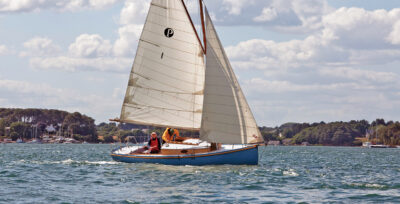
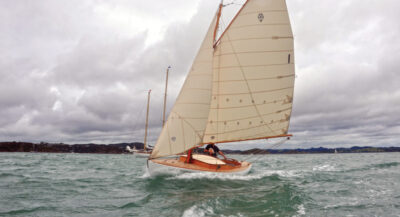
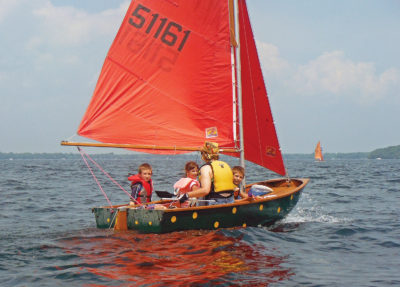
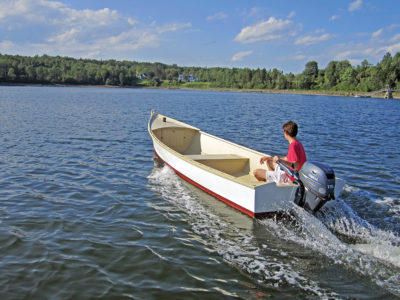
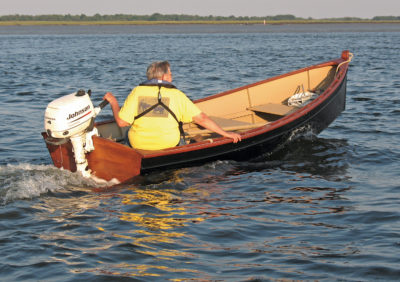
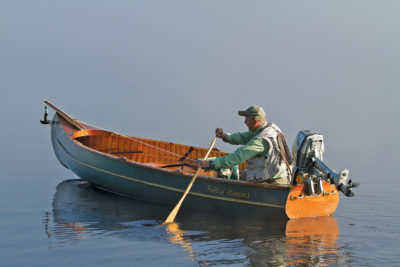
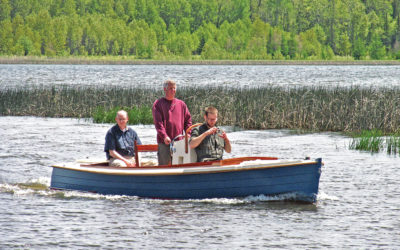
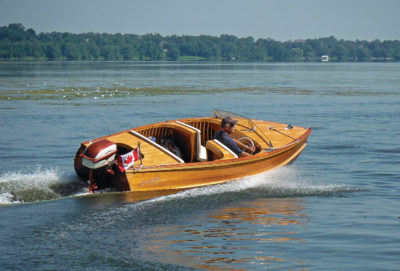
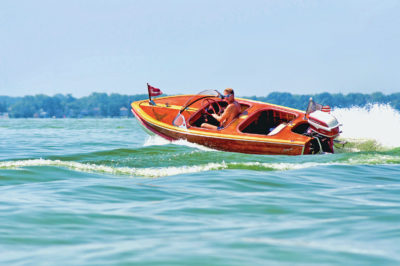
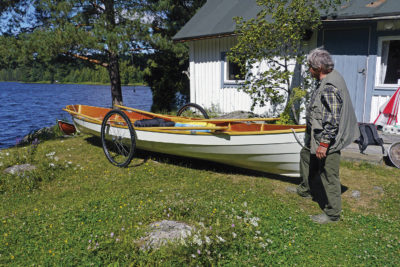
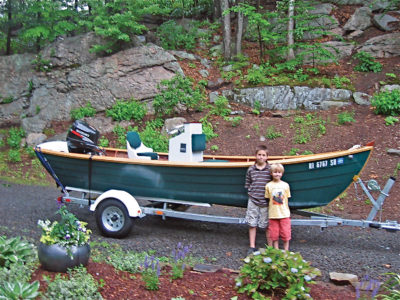
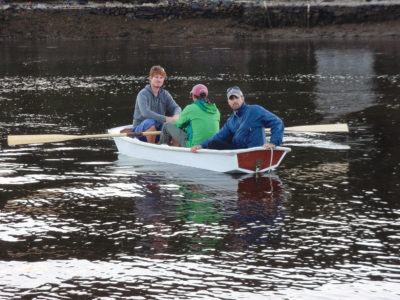
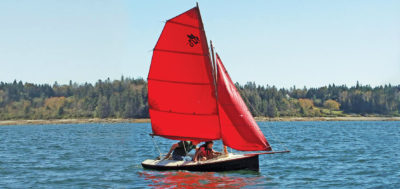
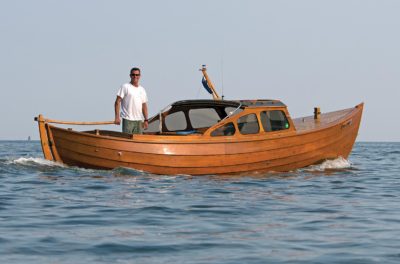
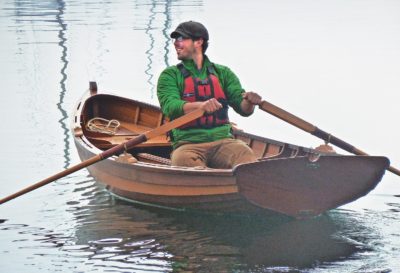
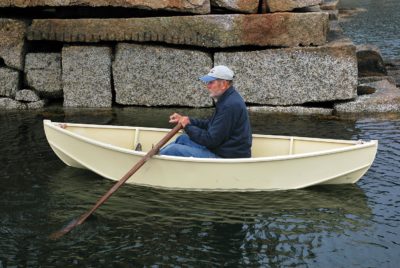
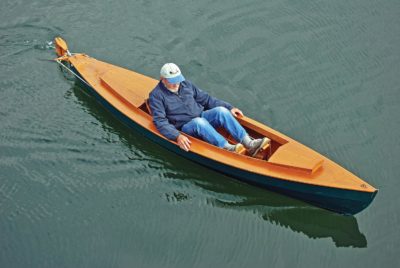
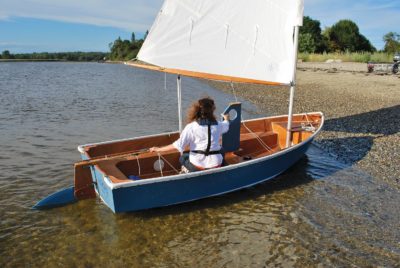
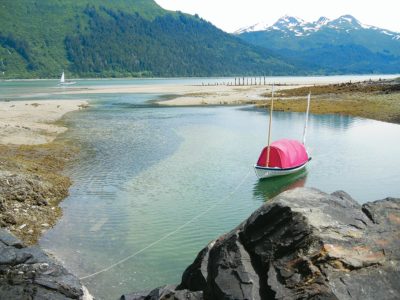
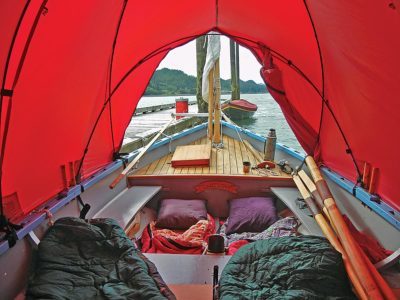
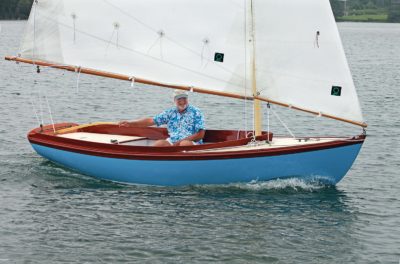
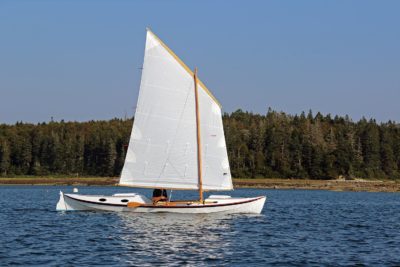
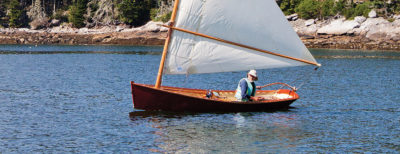
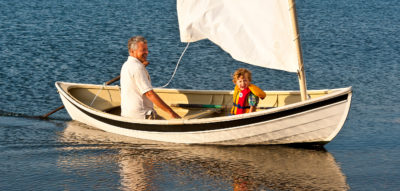
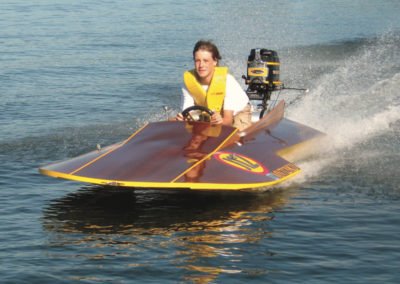

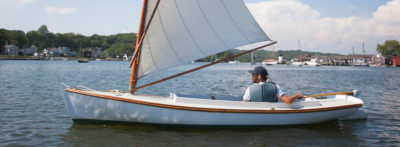

Join The Conversation
We welcome your comments about this article. If you’d like to include a photo or a video with your comment, please email the file or link.